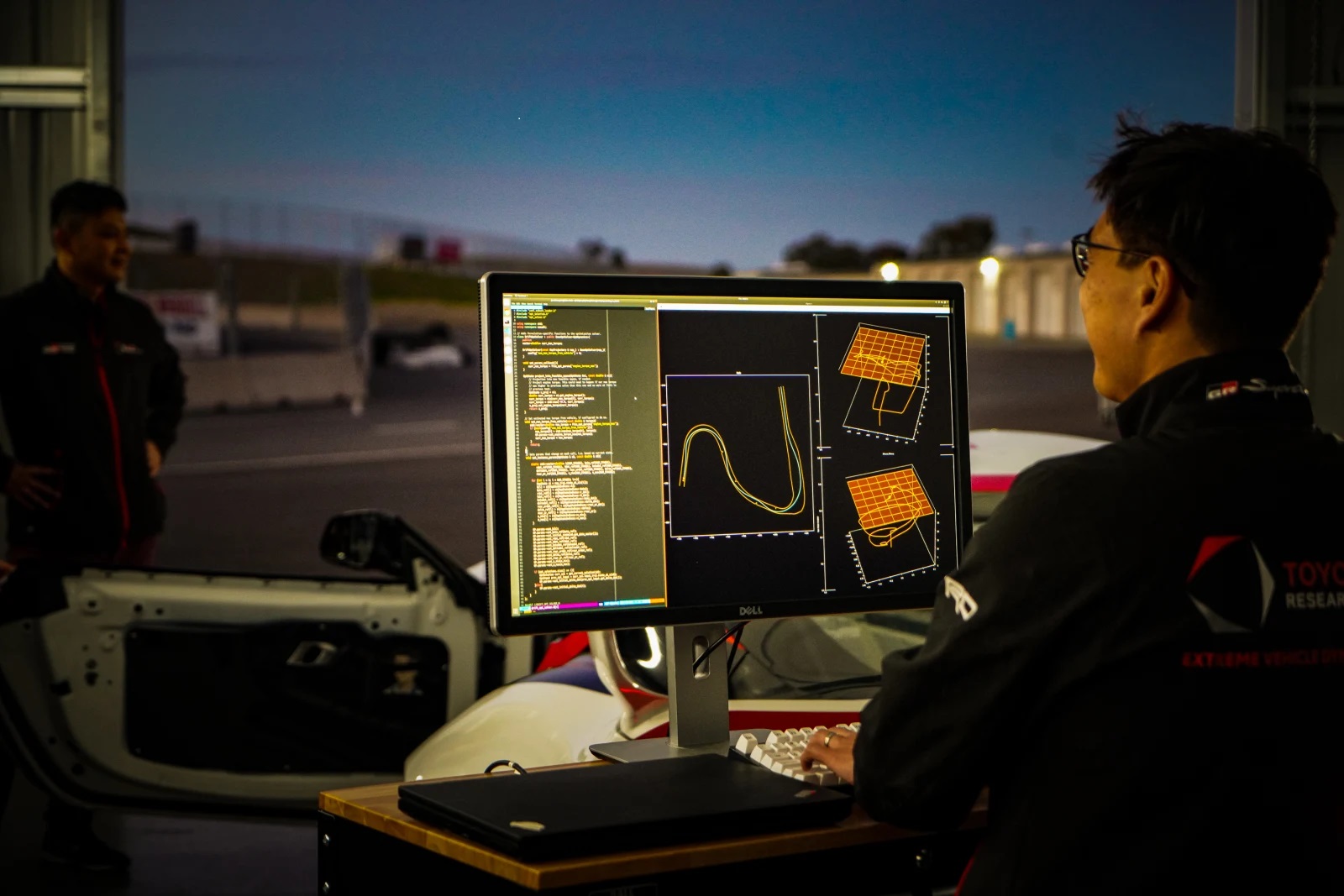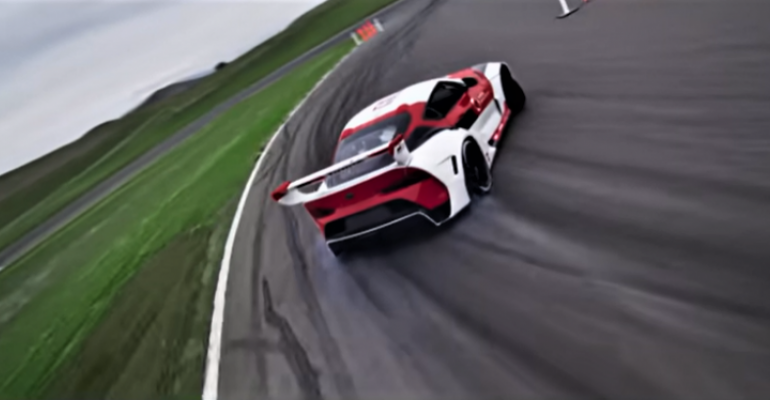Intentionally “drifting” a vehicle is a controlled maneuver that highly skilled drivers – such as those on racing circuits – can execute. It’s not taught in driver’s education.
But in a world first, Toyota Research Institute team members successfully programmed a vehicle to autonomously drift around obstacles on a closed track.
Drifting occurs when a driver oversteers, and the vehicle’s rear end slides out, pointing in the opposite direction from the front. Done unintentionally, it’s a scary situation.
TRI says its Nonlinear Model Predictive Control (NMPC) approach is to utilize controlled, autonomous drifting to avoid accidents by navigating away from sudden obstacles, such as black ice or a deer dashing into the road.
The new system relies on continuous algorithm calculations. It likely will find its way into tomorrow’s self-driving cars. But Toyota researchers developed it with an eye toward a sooner use: to keep active drivers out of tight spots.
 “Our goal is to use advanced technologies that augment and amplify humans, not replace them,” says Avinash Balachandran (pictured, above left), senior manager of TRI’s Human Centric Driving Research.
“Our goal is to use advanced technologies that augment and amplify humans, not replace them,” says Avinash Balachandran (pictured, above left), senior manager of TRI’s Human Centric Driving Research.
TRI research scientist Jonathan Goh adds: “When faced with wet or slippery roads, professional drivers may choose to ‘drift’ the car through a turn, but most of us are not professional drivers.
“That’s why TRI is programming vehicles (pictured, below) that can identify obstacles and autonomously drift around (them) on a closed track.”
Researchers used a specially equipped Toyota Supra loaded with software and rigged with computer-controlled steering, throttle, clutch displacement, sequential transmission and individual wheel braking.
Balachandran recently discussed the R&D project with Wards. Here is an edited transcript:
Wards: How long did it take to develop this?
Balachandran: We started about two years ago, building on academic partnership research, particularly from the Dynamic Design Lab at Stanford University (from which Balachandran earned an engineering PhD).
Wards: On a 1-to-10 scale, how hard was this project?
Balachandran: It’s an interesting question. After doing it for a while, you say, “Well, I could do more.” It’s good to push it. From an objective perspective, it’s hard – a 10. But we learned so much.
Wards: What particularly was the hard part?
Balachandran: Quite a few things.
On the algorithm side, your ability to accurately create what the car does is difficult. We had to build a deep understanding of the vehicle.
Also, we’re dealing with a real car. Simulations or other platforms are easier to control. We had to take into account the complexity of the physical system.
We gave the car lane boundaries. The algorithms had to replan the trajectory every 20th of a second to assure that, in avoiding an obstacle, the car was balancing the objective of staying in the lane while going into the drift.
Wards: In other words, getting into a potential sideswipe accident while avoiding a front-end accident is not optimal.
Balachandran: Exactly.
Wards: Where do you go from here with it?
Balachandran: Essentially, we are trying to give regular drivers access to expert-level skills, when necessary. This is something that could be incorporated into future electronic stability control systems.
We’re also thinking of building this into Toyota’s approach to the “chauffeur” (assisted-driving) system (the automaker) is working on.
Wards: So, like some current advanced driver-assist systems, it would be part of a fully autonomous vehicle?
Balachandran: Yes, the ultimate is that it be used in either (autonomous or assisted driving). The ability to control a car in extreme situations helps, whether you are physically driving or the car is driving itself.
Our approach was to address one of the hardest problems we can think of in vehicle control: drifting.
Wards: On one hand, you speak of improving people’s driving skills, with the car helping them out when needed. On the other hand, you talk about using this system in autonomous vehicles. Presumably, when AVs come, you won’t have to worry about driver skills.
Balachandran: We’re building capabilities. They could be helpful in the future. But we’re looking to build a system that has beneficial effects to drivers now.
Wards: You’re in both worlds, then?
Balachandran: Exactly.
Wards: If this system automatically kicks in, won’t that freak out the driver? Or do you not worry so much about that if it means keeping the driver out of a major accident?
Balachandran: We are looking at the capability, but also how to communicate that to the driver. Driver trust is paramount. It decreases if the car does something the driver didn’t expect. That’s an active research area. The more we learn about this, the more we learn that humans are complicated and unique.
Steve Finlay is a retired Wards senior editor. He can be reached at [email protected].
Nonlinear Model Predictive Control testing at Toyota Research Institute.





